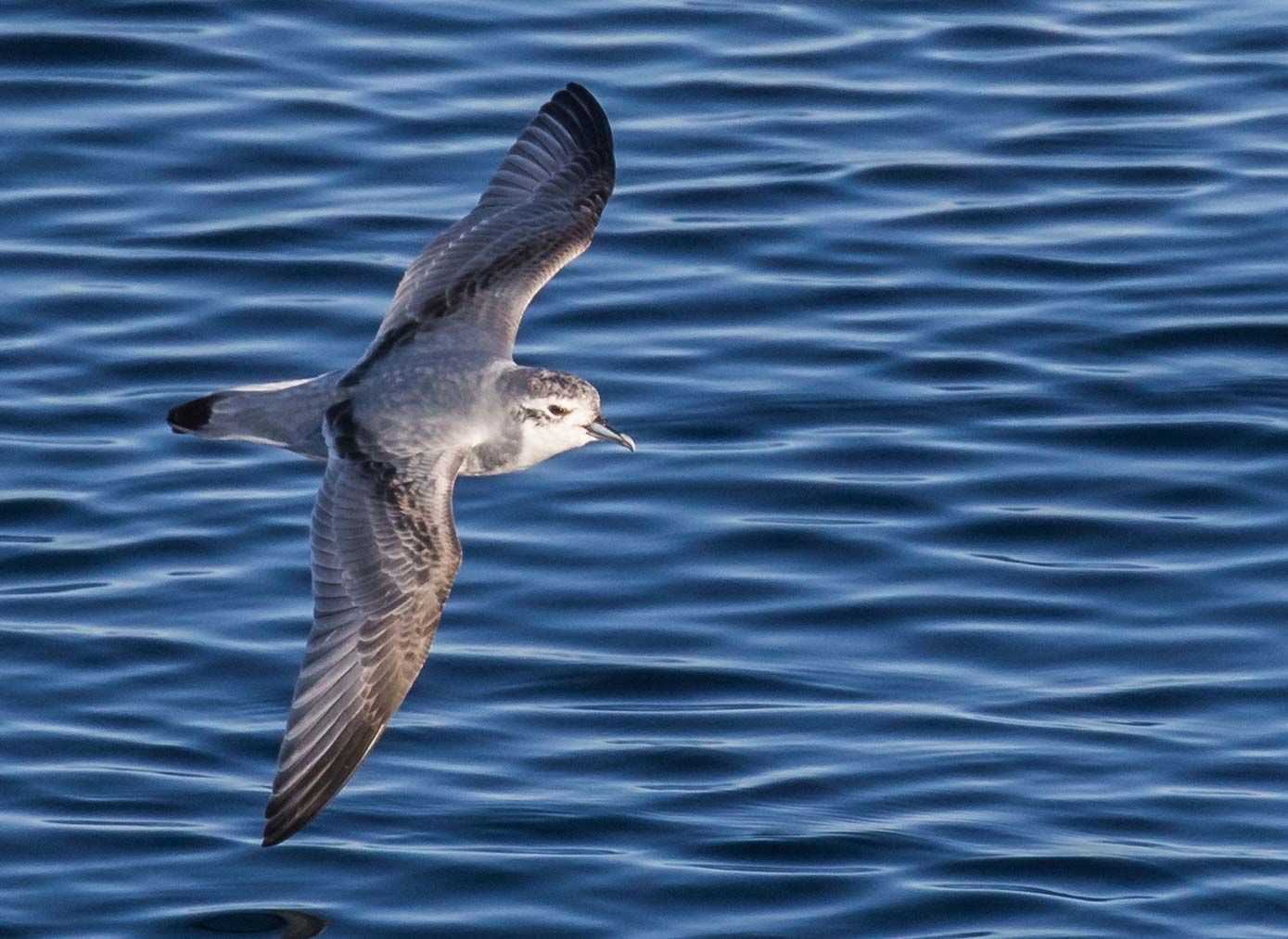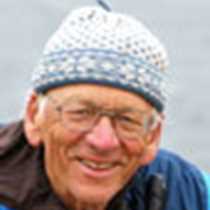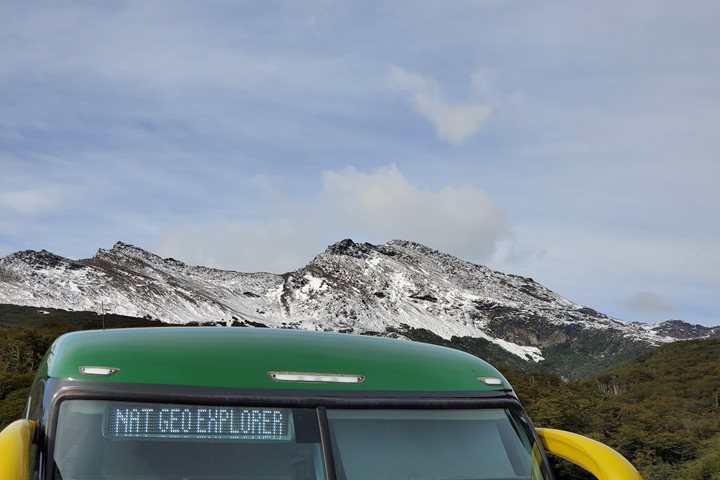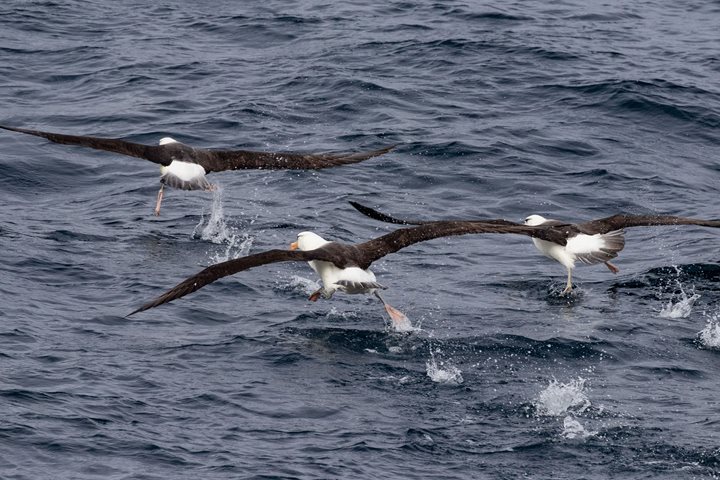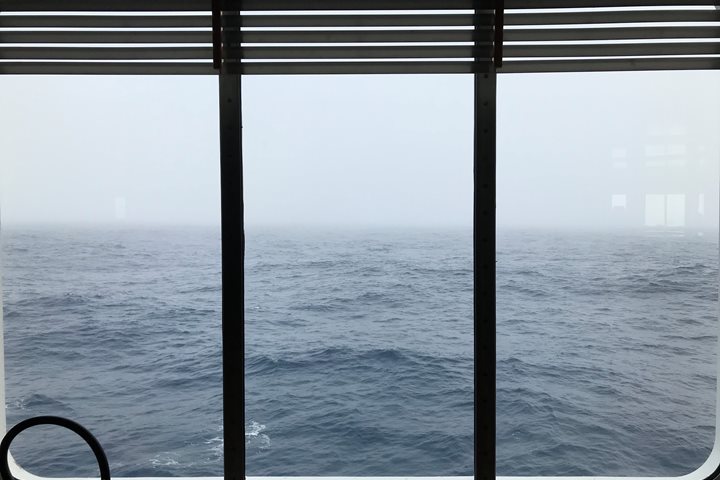The “Bird of the Day” was the slender-billed prion, small seabirds critically important to the Southern Ocean ecosystem. Because of the extremely calm conditions we were blessed with, many people spent time on the decks or near a window, looking for wildlife of the Patagonia Shelf. The list of species sighted on our journey grew longer as a few seabirds passed the ship.
In the afternoon, we heard a presentation on digital photography—a popular subject since many cameras of various styles and sophistication were brought on board. Later, the Global Perspectives Guest Speaker David Sibley spoke about developing the North American bird field guides for which he is well known.
Suddenly a call over the PA system announced that whale blows had been spotted in the distance. The staff naturalists collectively agreed that the animals were fin whales, the second largest of the baleen whales. Officers on the bridge maneuvered the ship to get us into position for exciting looks the marvelous animals. All in all, there were probably 25 or so individuals scattered as far as we could see.
For many, an additional highlight for the first full day of our voyage was a late afternoon arrival in the Falkland Islands. We arrived early, just before dusk, and we had a special outing take advantage of the timing. Dinner was served early and once finished, guests donned warm-weather gear and lifejackets to go ashore to watch thin-billed prions in their nest colonies. These small seabirds, like many other small seabird species, only come to their nesting areas at night. This nocturnal behavior is probably an adaptation to avoid predation by birds such as gulls, caracaras, and skuas.
To minimize disturbance to the birds, the naturalists carried lights with red coverings. It was a challenging walk across and up the grassy slope to the nests. We arrived and sat or stood quietly; the birds were swooping in and dropping to the ground. Eerie calls and coos came from inside their nesting burrows. On the water in the distance was a huge area of dark shadow surrounded by flat, mirror-like water. That dark area was thousands of rafted prions waiting to fly ashore. With so many birds amassed, the noise from them was a low roar. Although stumbling and shuffling in the darkness was a challenge, the reward of this unique experience was well worth it. What a way to start this voyage to a very remote region of the world.

